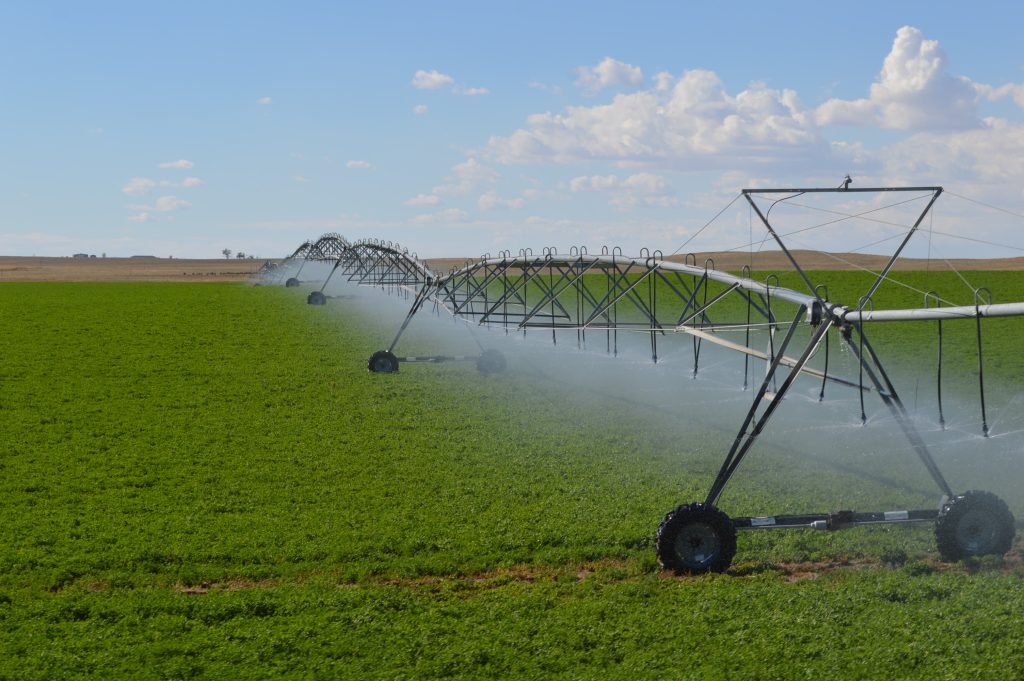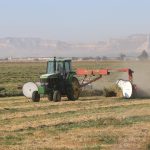Nebraska lawsuit takes aim at augmentation

Water-RFP-081825
When Nebraska officials filed a lawsuit with the U.S. Supreme Court over water in the South Platte River, they took aim directly at a 56-year-old Colorado practice called augmentation.
The lawsuit claims Colorado is routinely violating the 1923 South Platte River Compact, which lays out responsibilities of both states to maintain a useable water supply flowing out of Colorado into Nebraska during the irrigation season. The lawsuit also accuses Colorado of obstructing Nebraska’s efforts to build the Perkins County Canal, which also is specified in the river compact.
For their part, Colorado water administrators fear that, if Nebraska eventually does build the Perkins County Canal, it will destroy a half-century of water augmentation in the state’s Water District 64. That’s the part of the South Platte River between the western boundary of Washington County, Colorado, and the Colorado-Nebraska state line.
AUGMENTATION AT ISSUE
Nebraska officials say water augmentation is what caused the problems in the first place. In an op-ed piece published in the Sidney, Neb., Telegraph on Aug. 7, spokespersons from six of Nebraska’s 23 Natural Resources Districts likened augmentation to “robbing Peter to pay Paul.”
“The fact is that the Perkins County Canal will call out the water Colorado’s augmentation plans rely on to take Nebraska’s summer irrigation water,” the opinion piece said. “In plain terms, Peter will be broke and won’t be able to pay Paul. That water will instead flow downstream into Nebraska — just as the compact intended.”
In its 55-page complaint to the U.S. Supreme Court, Nebraska calls the augmentation system illegal and a violation of the river compact.
“Colorado’s water administration system, including its augmentation plans, have harmed and will continue to harm Nebraska,” the lawsuit reads. “For example, many augmentation projects … allow junior well owners to pump water out of priority during the irrigation season, provided they pump or divert additional water during the non-irrigation season and apply it to recharge ponds. This method assumes that water will percolate back into the water table and make its way to the South Platte River in time to make whole downstream senior users.”
Kent Miller is general manager of the Twin Platte Natural Resources District, which includes most of the South Platte River in Nebraska. He’s said he’s watched the river since 1972 and is skeptical that augmentation even works.
“Those plans have not been working, and I base that on the fact that the Western Irrigation District rarely receives what it’s supposed to receive,” Miller said.
Devin Brundage, general manager of the Central Nebraska Public Power and Irrigation District headquartered in Holdredge, told The Fence Post Nebraska is limited in what it can do to increase its South Platte water supply. Although it’s widely accepted that return flows will increase the amount of water in the river, how much water and how fast it returns to the river, and where it shows up, all depend on the geology under the land being irrigated.
“All all we have is the elements within the compact to work with,” he said. “When the compact was negotiated, we anticipated that Colorado would continue to do surface irrigation. We know that applying water to fields would result in return flow.”
Because of that, Brundage said, Nebraska gave up all other rights except the right to build the Perkins Canal. And, he pointed out, well augmentation isn’t in the compact.
“All we see is what water shows up at the state line,” he said. “When we look at data from 1969 (to the present) those numbers have gone down steadily.”
To understand augmentation, it’s important to know that the river is not just the rivulet of water that meanders through the High Plains. It is actually an aquifer, a long formation of mostly underground sand and gravel that spreads out on either side of the streamflow. The river we see is the top of the aquifer, although the aquifer actually slopes downward from its outer edges to the stream bed.
Like everything else about the South Platte, the aquifer is not uniform nor easily defined. According to the U.S. Geological Survey, it is anywhere from one mile to 15 miles wide and has a depth of between 20 and 200 feet.
RETURN FLOW
It is assumed, then, that water diverted from the river and spread out over the land will soak down into the aquifer and flow back toward the stream bed in a phenomenon called return flow. Irrigation of farmland alongside the river in the late 19th and early 20th centuries widened and deepened the aquifer so that, rather than being dry most of the year, the river flows year-round.
The importance of return flows is outlined in a 1922 treatise by Ralph Parshall, a researcher with the U.S. Soil Conservation Service and published by Colorado State University. Parshall concluded that seepage from ditches, ponds, reservoirs and irrigation activity added, on average, 750 cubic feet per second of water along the 143-mile lower reach of the river.
In 1954, Robert Glover and Glenn Balmer published “River depletion resulting from pumping a well near a river,” a 160-page paper in the scientific journal Eos Science News, that arrived at “the Glover equation,” a formula for determining just what its title implies. That formula is still used to calculate how much replacement water is needed to make up for depletions from pumping out of a river aquifer.
In 1969 Colorado water authorities decided that, based on Parshall’s and Glover’s work, return flows could be used to augment water pumped out of the aquifer. The conclusion was that, if a like amount of water was pumped into holding ponds to seep back into the river over the winter, it would be as if the well wasn’t even there.
Nebraska isn’t having it.
In its complaint to SCOTUS, Nebraska refutes the assumption that augmentation even works.
“(T)his assumption is just that — an assumption, with no real-time reporting or on-the-ground physical verification to back it up,” the complaint states.
Nebraska even cites two Colorado Supreme Court decisions — Empire Lodge Homeowners’ Ass’n v. Moyer, 2001, and Simpson v. Bijou in 2003 — in which the validity of augmentation was called into question.
The bottom line, Nebraska says, is that the irrigation wells are junior in water rights to almost everyone on the river, and especially to the river compact. Parshall’s studies and Glover’s equation notwithstanding, well augmentation is not mentioned in the South Platte River Compact.
In Nebraska, the only calculation that matters is 120 cubic feet per second across the state line.





